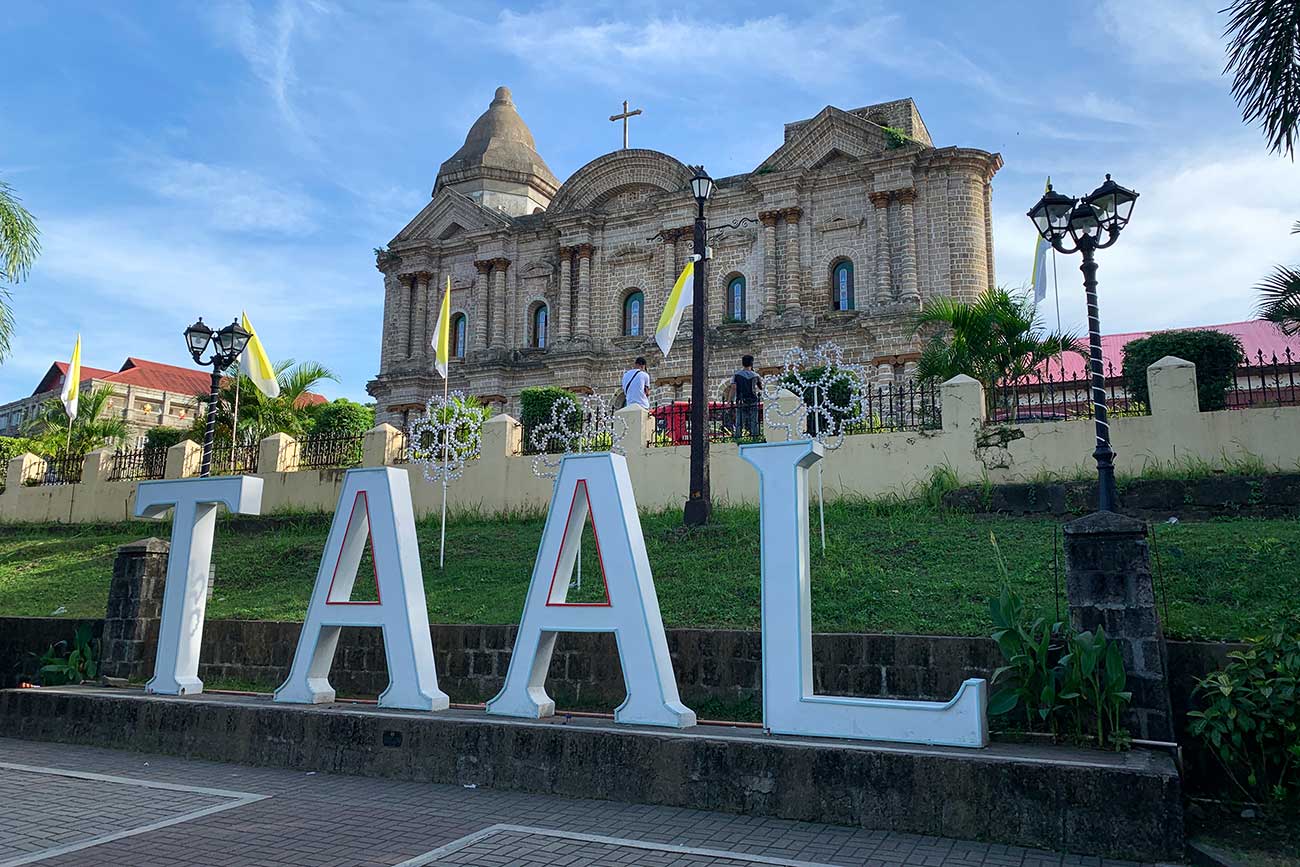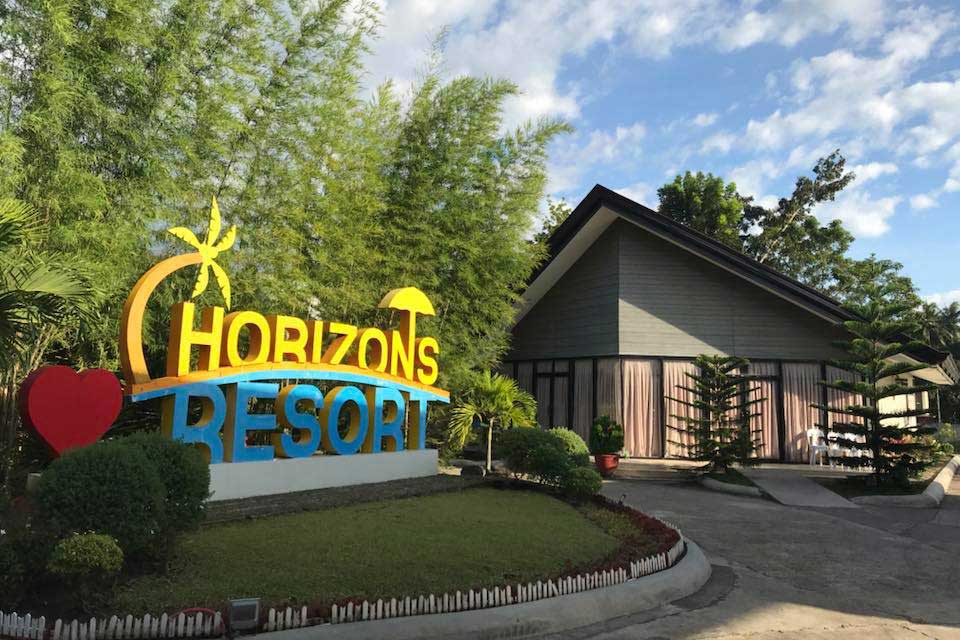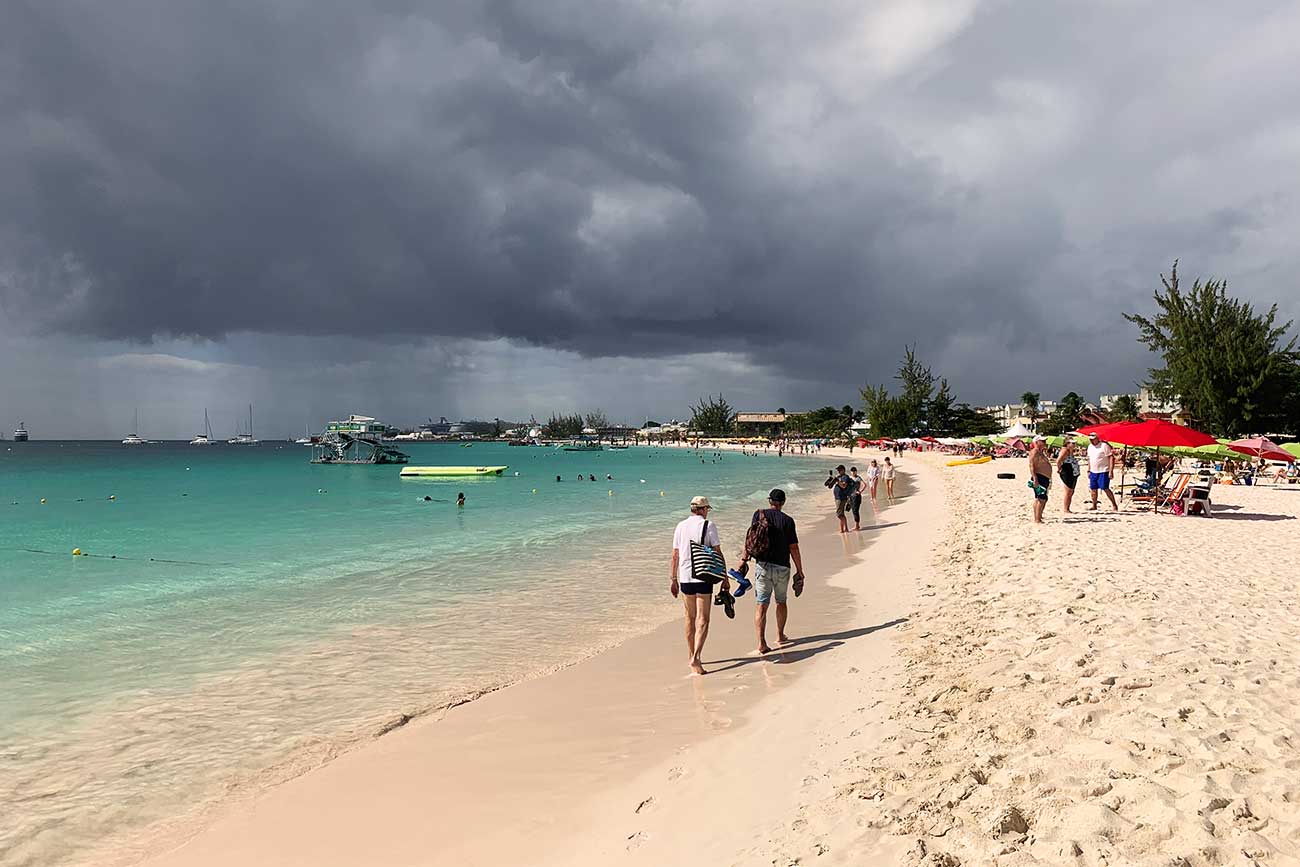Join me on an epic full day tour to Taal Heritage Town in Batangas – a journey that will leave you breathless with wonder and amazement. Imagine setting off on an impromptu adventure to the unknown. You have no idea where to go or what to do, but the thrill of the unexpected fuels your excitement. But don’t let the unknown leave you lost in a sea of uncertainty!
Allow me to guide you through the town’s rich history, soak up the culture, and witness traditional Filipino demonstrations that will have you on the edge of your seat. With each stop, you’ll discover the beauty and charm of this hidden gem, creating memories that will last a lifetime.
Taal, a charming town in Batangas, is known for its well-preserved historic homes and centuries-old churches dating back to the Spanish colonial era. Its architecture is a blend of Baroque, Art Deco, and Bahay na Bato styles. Visitors can stroll through the town and enjoy its nostalgic atmosphere, try the delicious local cuisine, and discover the rich cultural heritage of the Philippines. Taal is a great day trip or weekend escape destination from Manila.
Are you ready to explore the charming town of Taal in Batangas, Philippines? With its rich history, cultural heritage, and scenic beauty, Taal is an ideal destination for a DIY tour. In this itinerary, we’ll take you through some of the must-visit spots in Taal, where you can indulge in local delicacies, learn about the town’s fascinating past, and enjoy its natural splendor. So pack your bags, put on your walking shoes, and get ready to discover the best of Taal.
Discover Taal
Taal Basilica
Also known as the Basilica of St. Martin of Tours, Taal Basilica is a shining example of the Philippines’ rich cultural heritage. The basilica’s construction began in 1755 and was completed in the mid-1800s in Baroque style. It has since undergone several renovations and expansions, which have added to its majesty.
 The facade of the basilica is adorned with intricate carvings and statues, making it a breathtaking sight to behold. The interior is equally impressive, with stunning stained-glass windows, elaborate altars, and paintings.
The facade of the basilica is adorned with intricate carvings and statues, making it a breathtaking sight to behold. The interior is equally impressive, with stunning stained-glass windows, elaborate altars, and paintings.
The Taal Basilica boasts an intriguing feature with its connection to an underground tunnel system. It is said that the tunnel links to neighboring cities of Taal, such as Lemery, San Nicolas and Santa teresita. This network of tunnels dates back to the Spanish colonial period, where it served as an escape route during times of conflict. Some believe that the tunnels were also used to smuggle goods and people out of town.
From its use as a wartime escape route to its possible use in smuggling, the tunnels offer a glimpse into a bygone era and the challenges faced by those who lived through it.
 The grandeur and beauty of the Taal Basilica have drawn attention not only in the Philippines, but all over the world. Many travel and architecture publications feature the church as a must-visit destination, and it has been recognized as a National Cultural Treasure by the National Museum of the Philippines. The basilica is a testament to the skill and artistry of the Filipino people and their dedication to preserving their cultural heritage for future generations.
The grandeur and beauty of the Taal Basilica have drawn attention not only in the Philippines, but all over the world. Many travel and architecture publications feature the church as a must-visit destination, and it has been recognized as a National Cultural Treasure by the National Museum of the Philippines. The basilica is a testament to the skill and artistry of the Filipino people and their dedication to preserving their cultural heritage for future generations.
Our Lady of Casaysay Academy
Our Lady of Casaysay Academy is a private Catholic school located in Taal, Batangas. While the academy is primarily a school for students, it is also home to the Caysasay Shrine, which is open to the public for tours.
Casaysay Shrine
Casaysay Shrine is a popular religious destination located in the town of Taal, Batangas. The shrine houses a small chapel and a well, both of which are said to have miraculous healing powers. It is believed that the well was discovered in 1603 by a group of fishermen who saw an image of the Virgin Mary floating on its surface. Since then, the shrine has become a place of pilgrimage for many Catholics seeking healing and spiritual renewal. Visitors can explore the chapel and the grounds of the shrine, and even take a dip in the well’s holy water for a chance at healing and blessings. While the academy itself may not be open for public tours, the Casaysay Shrine is open to visitors.
Villavicencio Wedding Gift House
Upon stepping inside the Villavicencio Wedding Gift House, I was instantly transported to a world of old-world charm and sophistication. The mansion’s intricate details and classic design were simply breathtaking, evoking a sense of refined elegance and style. From the grand staircase to the ornate carvings and sumptuous furnishings, every aspect of the mansion was a true masterpiece. As I wandered through the rooms, I felt as though I was experiencing a slice of history firsthand, and I couldn’t help but marvel at the beauty and craftsmanship of the artifacts on display. It was a truly unforgettable journey into a world of timeless grace and sophistication.
Casa Villavicencio
Casa Villavicencio is one of the most well-known and well-preserved heritage houses in Taal, Batangas. This beautiful mansion, built in the 1850s, showcases a unique blend of Filipino, Chinese, and European architectural styles, making it a true masterpiece of colonial-era design. It was once home to Gliceria Marella Villavicencio, a prominent figure in the Philippine Revolution against Spanish colonial rule, and her husband Eulalio Villavicencio, a wealthy businessman and revolutionary.
 Today, Casa Villavicencio is open to visitors, providing an excellent opportunity to learn about the town’s history and its prominent personalities. The house is furnished with antique furniture, period clothing, and other historical artifacts, giving visitors a glimpse of what life was like during the colonial era.
Today, Casa Villavicencio is open to visitors, providing an excellent opportunity to learn about the town’s history and its prominent personalities. The house is furnished with antique furniture, period clothing, and other historical artifacts, giving visitors a glimpse of what life was like during the colonial era.
 The mansion’s grand ballroom is a standout feature, with its intricately designed ceiling and elegant chandeliers. Other highlights include the family’s private chapel, the grand staircase, and the secret passageways that were used during the revolution.
The mansion’s grand ballroom is a standout feature, with its intricately designed ceiling and elegant chandeliers. Other highlights include the family’s private chapel, the grand staircase, and the secret passageways that were used during the revolution.
Agoncillo Mansion
The Agoncillo Mansion in Taal, Batangas, is another well-preserved heritage house that provides visitors with a glimpse into the town’s rich history and culture. This impressive mansion was built in the early 1900s and is named after its most famous resident, Felipe Agoncillo, a prominent diplomat who served as the Philippines’ first representative to the United States.
 The mansion’s architectural styles are a mix of Filipino, Chinese, and Spanish, with intricate carvings, ornate moldings, and detailed paintings adorning its walls and ceilings. Visitors to the house can take a guided tour to learn about the Agoncillo family’s history, contributions to Philippine society, and the various artifacts and antiques on display.
The mansion’s architectural styles are a mix of Filipino, Chinese, and Spanish, with intricate carvings, ornate moldings, and detailed paintings adorning its walls and ceilings. Visitors to the house can take a guided tour to learn about the Agoncillo family’s history, contributions to Philippine society, and the various artifacts and antiques on display.
The beautifully landscaped garden, which includes a gazebo, a fountain, and a collection of exotic plants and flowers, is one of the highlights of the Agoncillo Mansion. The garden is an excellent place to unwind and take in the mansion’s old-world charm.
Galleria Taal
Galleria Taal is a treasure trove of Philippine history and culture, housed in a charming heritage building that’ll take you back in time. The old-world ambience is the perfect backdrop for the extensive collection of antique cameras, photographs, and memorabilia, giving visitors a peek into the town’s past. It’s a must-visit for history buffs and photography enthusiasts alike. Immerse yourself in the rich history and culture of Taal, Batangas at Galleria Taal.
Paradores del Castillo
Now a hotel, Paradores del Castillo is a dream come true for those seeking a fairytale escape. As you enter the main hall, you’re enveloped by a warm and welcoming atmosphere that immediately makes you feel at ease. The cozy rooms are decorated with charming details and evoke a sense of homey comfort that’s hard to come by. But the real magic lies in the rooftop terrace, where you can soak in the breathtaking views of the town below and be swept away by the romance of it all. Whether you’re savoring a cup of coffee in the morning or a glass of wine in the evening, every moment spent here feels like a fairytale. It’s no surprise that Paradores del Castillo captured my heart, and I’m already planning my next visit.
Marcela Agoncillo Museum
Take a step into the past and discover the incredible story of Marcela Agoncillo, the talented seamstress who designed the Philippine national flag. At the Marcela Agoncillo Museum and Monument in Taal, Batangas, you’ll immerse yourself in her world and get a glimpse of her life through a vast collection of her personal belongings. From her beloved sewing machine to a replica of the iconic flag, each item tells a story of her unwavering dedication to her craft and her country. It’s an awe-inspiring experience that will leave you feeling humbled and inspired by this remarkable woman’s legacy.
Goco Ancestral House
 Experience the grandeur and extravagance of Taal’s aristocratic families at the Goco Ancestral House. This magnificent mansion will transport you to a different era with its vintage architecture, intricate woodwork, and elegant decor. The antique furnishings and intricate details are a testament to the opulent lifestyle of the town’s elite. The expansive gardens are a tranquil oasis, inviting visitors to relax and soak up the peaceful atmosphere. Whether you’re an art lover, a history enthusiast, or simply seeking a unique and unforgettable experience, the Goco Ancestral House is a must-visit destination that will leave you enchanted.
Experience the grandeur and extravagance of Taal’s aristocratic families at the Goco Ancestral House. This magnificent mansion will transport you to a different era with its vintage architecture, intricate woodwork, and elegant decor. The antique furnishings and intricate details are a testament to the opulent lifestyle of the town’s elite. The expansive gardens are a tranquil oasis, inviting visitors to relax and soak up the peaceful atmosphere. Whether you’re an art lover, a history enthusiast, or simply seeking a unique and unforgettable experience, the Goco Ancestral House is a must-visit destination that will leave you enchanted.
Apacible Ancestral House
The Apacible Ancestral House is a stunning example of Taal’s architectural heritage, with its grand facade and beautifully landscaped garden. The spacious interiors are adorned with vintage decor, taking visitors on a journey through time. A visit here is a chance to step back in time and experience the grandeur of Taal’s past.
Other places to explore:
1. Escuela Pia: Explore the history of one of the oldest schools in the Philippines at Escuela Pia in Taal, Batangas. This beautifully restored building now serves as a museum showcasing the school’s impact on education in the country. Discover the stories of the poor children who received an education here thanks to the Dominican friars and learn about the importance of education in the early 19th century.
2. Villa Tortuga: Get a taste of the grandeur and elegance of the Spanish colonial period at Villa Tortuga in Taal, Batangas. This heritage house, built in the early 1900s, boasts intricate wood carvings, ornate furniture, and well-preserved architecture. Take a guided tour of the house and learn about the lavish lifestyle of the affluent families who lived there.
3. Basilica Heritage Museum: Explore the fascinating history of the Taal Basilica at the Basilica Heritage Museum. This museum, located within the basilica, features a collection of religious artifacts, vestments, and paintings dating back to the early 16th century. Discover the role the basilica played in the town’s history and culture and marvel at the stunning artwork on display.
4. Balisong-making demonstration: Experience the excitement of watching skilled craftsmen create the iconic Filipino folding knife, the balisong. In Taal, Batangas, visitors can witness a balisong-making demonstration and learn about the history and cultural significance of this traditional Filipino weapon.
5. Tapa-making demonstration: Foodies unite and get a chance to learn how to make a traditional Filipino breakfast dish, tapa. In Taal, Batangas, visitors can witness a tapa-making demonstration and learn about the unique methods of preparing and cooking the dish.
6. Barong Tagalog-making demonstration: Be in awe of the intricate embroidery and craftsmanship that goes into making the national costume of the Philippines, the Barong Tagalog. In Taal, visitors can witness a Barong Tagalog-making demonstration and learn about the history and cultural significance of this stunning garment.
As our full day tour of Taal, Batangas draws to a close, you can’t help but feel a sense of enchantment and amazement. You embarked on a journey of the senses, where every step of the way was a feast for your eyes, ears, and palate. The history of the town came to life before your eyes, and you were transported to another time, another place. You immersed yourself in the local culture and were left breathless by traditional Filipino demonstrations that showcased the talents of the people. Every turn revealed new layers of beauty and charm, leaving you in awe of the hidden gem that is Taal. So hold on to these memories, and let them inspire you to seek out new adventures and experiences.
































